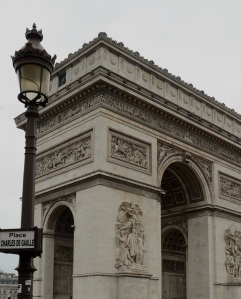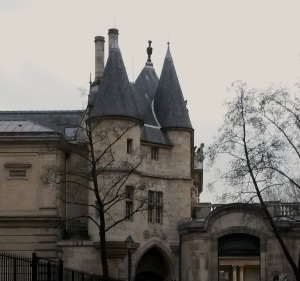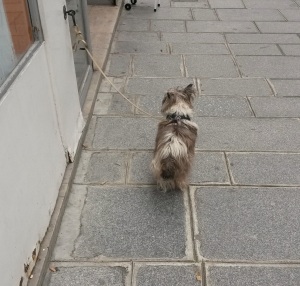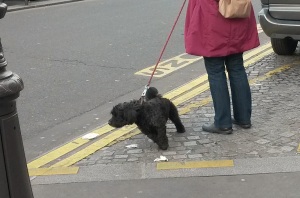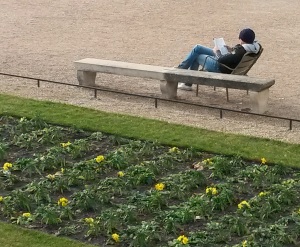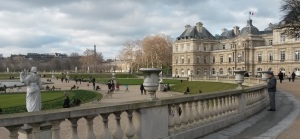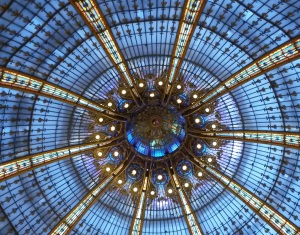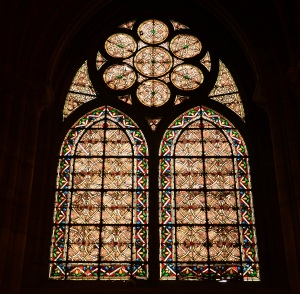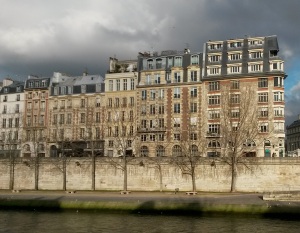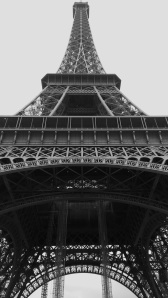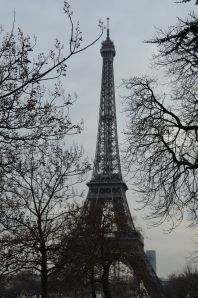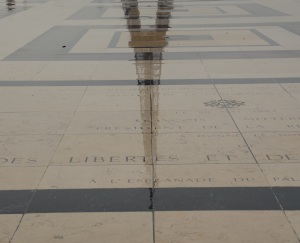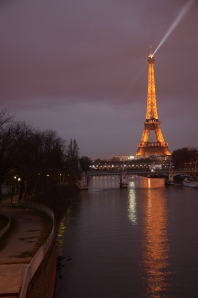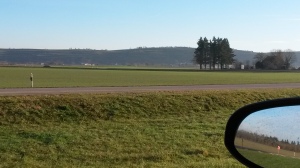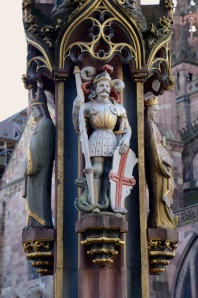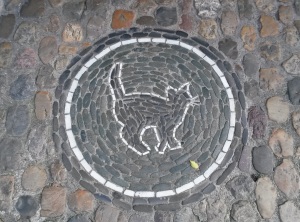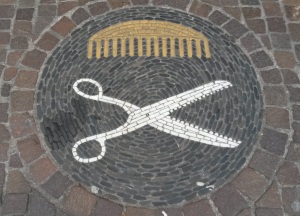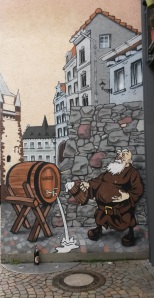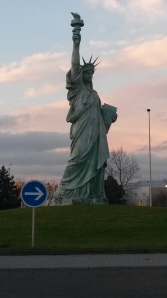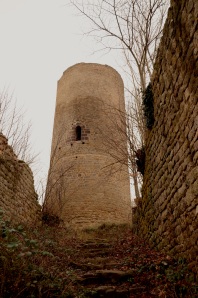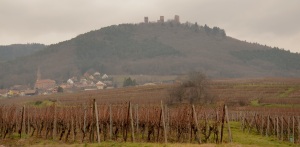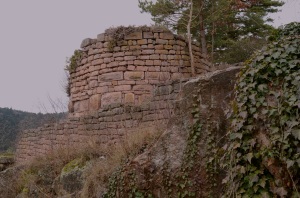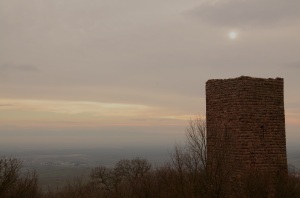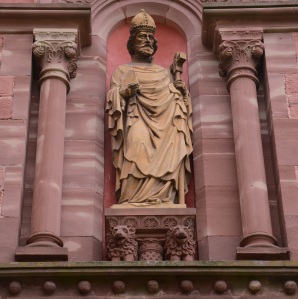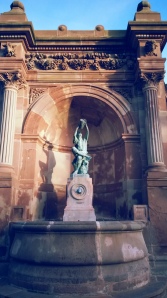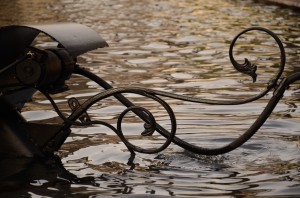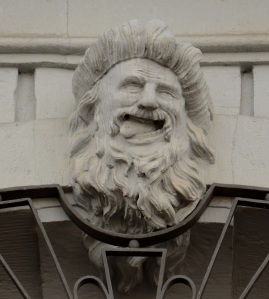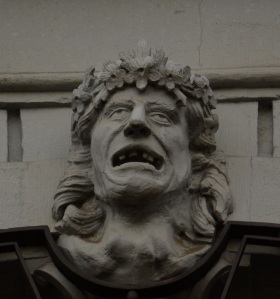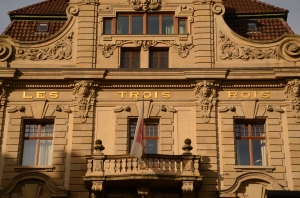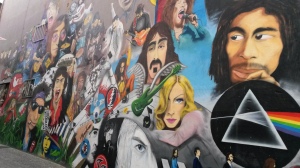The apartment we have been staying in is sweet, warm and comfortable. However, one noticeable omission in the kitchen is a toaster. I’m a cereal and toast girl. But, forgoing my daily toast routine was not too difficult given that baguettes and pastries are in plentiful supply. So, before setting off for a day of adventures to the north of Colmar we stopped in at the homely Au pain de mon Grand-Père (Grandad’s bread) for a ficelle (shorter, thinner, and slightly twisted bread stick), two pains aux raisins (with juicy raisins scattered through the coiled pastry) and my favourite – a pain au chocolat. Of these, I will never tire.
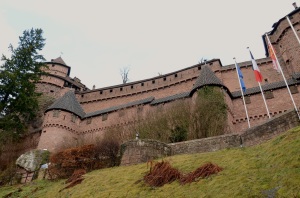
Château du Haut-Koenigsbourg
With the car now smelling like a fragrant bakery we burned up the autoroute to the Château du Haut-Koenigsbourg. This is the mother of all châteaux in the Vosges mountains. As the road looped upwards the vistas became more awesome. Some smart duke recognised the strategic position of a rocky spur up in the mountains. The castle was built on top, containing various bedrooms, a chapel, kitchen, artillery and a medieval garden. Like many, it has seen bad times and was largely destroyed by fire. It has been heavily restored in keeping with how it once was. I noticed only a few other duos or trios of tourists, braving the fierce chill in this draughty stone place. Finishing up in the bookshop and little café my parents and I each had a bowl of piping hot vegetable soup to return some warmth to our extremities.

Château du Haut-Koenigsbourg across the vineyards
Driving south we passed turn-offs to a few villages – Rodern and Rorschwihr. Vineyards stretched away on both sides of the road. We stopped at Bergheim. A spur of the moment decision really. I was navigating and giving directions. We came to a roundabout and I said, ‘Well, this must be Bergheim to the left. Let’s do a drive-through.’ (My slang for let’s have a look at the village from the warmth of the car rather than getting out and walking.) Just as we went through the roundabout we saw a car park and all decided that actually, we would get out and poke around despite the cold. You never know if you’ll be back so the ‘seize the day’ mentality often prevails.

Bergheim’s ramparts
Well, Bergheim was a little gem! Cobbled streets, ramparts with towers, views across vineyards, tiny herb gardens, immaculately preserved houses – the village was definitely worth exploring. It was quiet, barely a person in sight. A couple of guys were taking down Christmas decorations, confirming that it does take two men to use a ladder, while the odd resident walked their dog. Mum and I found a quirky jam shop and chatted to the owner who makes all the jams, preserves and marmalades from fruit that she grows herself. Her speciality was wild rose. The raspberry jam (which was the perfect snack with our ficelle later on) was the fruitiest, most natural tasting dollop of deliciousness.

Quirky facade of the jam shop – Bergheim
While we were ensconsed in an education about jam Dad had dropped into a restaurant for a coffee. He was so delighted with the place – its occupants, the smells wafting through from the kitchen and the dog under one of the tables – that he sent us a text message saying he’d found lunch. I thought that the soup at the château was my lunch… But after perusing the menu and looking at the other diners and their food I thought that I’d be able to find room for the lamb shanks after all.
This meal now ties for top place with the one I enjoyed in Eguisheim and was a superb birthday meal. The lamb shanks had been marinated in a honey and spice dressing and cooked slowly. The sweetness of the honey really was to die for. The accompaniments to this tasty piece of meat were creamy potatoes, broccoli (also with cream and some cheese) and braised endive. It was damn good. And even better with a pitcher of pinot blanc. Entertainment, while we ate, was provided by a gorgeous dog (yes, this is France and there was a dog in the restaurant during the lunch sitting) that was alternating between good behaviour and being playful (maybe because I was looking at him and making the noises I do when I see a beautiful dog). His owners were enjoying their lunch and telling him to sit every now and then. We chatted to the chef after our meals and I told him the potatoes were just scrumptious.
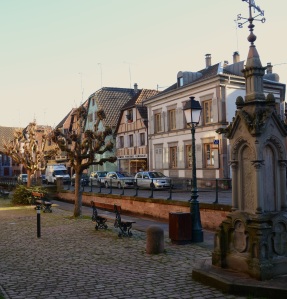
Ribeauvillé
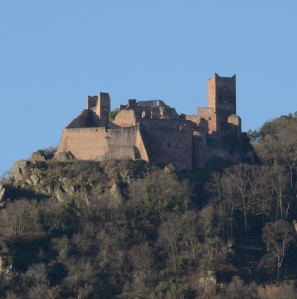
Château de Saint-Ulrich above Ribeauvillé
The afternoon was shaping up to be the best yet, weather-wise. I wanted to pack in as much as possible. We took a back road out of Bergheim, right through the vines, to the main road and on to Ribeauvillé. One of the bigger towns on the Route des Vins d’Alsace, this place was busier than Bergheim and actually had some other tourists. We wandered for a half hour, took photos of fountains, had a look in some souvenir shops and enjoyed the architecture. There were stacks of cellar doors in town. Summer would be chaotic. I saw three castle ruins on the surrounding hills of the town and read later that they are accessible by foot – a three hour hike through dense forest. Not today, but maybe one autumn or spring…
Riquewihr was a short distance further south. Its outer walls still encircle the village. And they, in turn, are surrounded by vine-covered hills, as high up as a man and his truck can reach. Once parked, and having dodged quite a number of dogs’ droppings, we found ourselves on the main street, leading uphill away from the town hall to the old city gate. Unfortunately the roar of bulldozers took away from the charm a little. A stretch of cobblestones had been dug up and holes gouged in this relatively narrow street. Further up, more machines seemed to be ripping apart several fire-damaged buildings. I watched for five minutes, then took a side street. However, finding that it was a dead-end I was back to the earth-moving equipment. Needless to say, with the noise and inability to access many side streets, as well as the waning daylight we decided to move on.
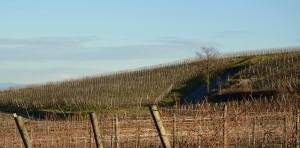
Vineyards around Riquewihr
Returning to Colmar and leaving the car at the Europcar office we took a bus back to our apartment and settled in for a night of ice skating – I came across a Swiss TV channel televising the European Championships Figure Skating 2014. Mum and I being avid ice skating fans we watched, enthralled, as the women glided, jumped, crash-landed in some cases, and spun around the rink in sparkly outfits. I always enjoy seeing how ice skaters personalise their skates – some like to go with a diamanté look, perhaps their initials, and others display symbols or some lucky charm. We watched till the end and saw Julia Lipnitskaia, a 15 year old Russian who was debuting, take the title. It was excellent viewing and a lovely end to a memorable birthday in Alsace.
